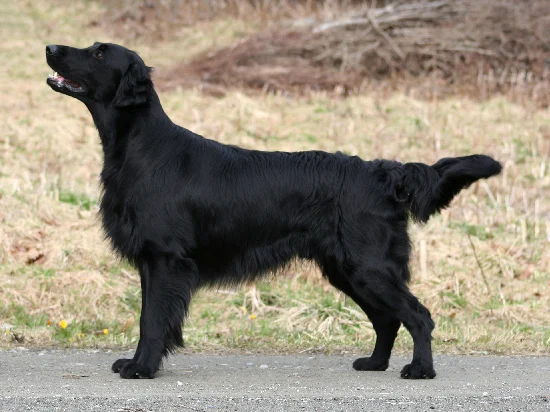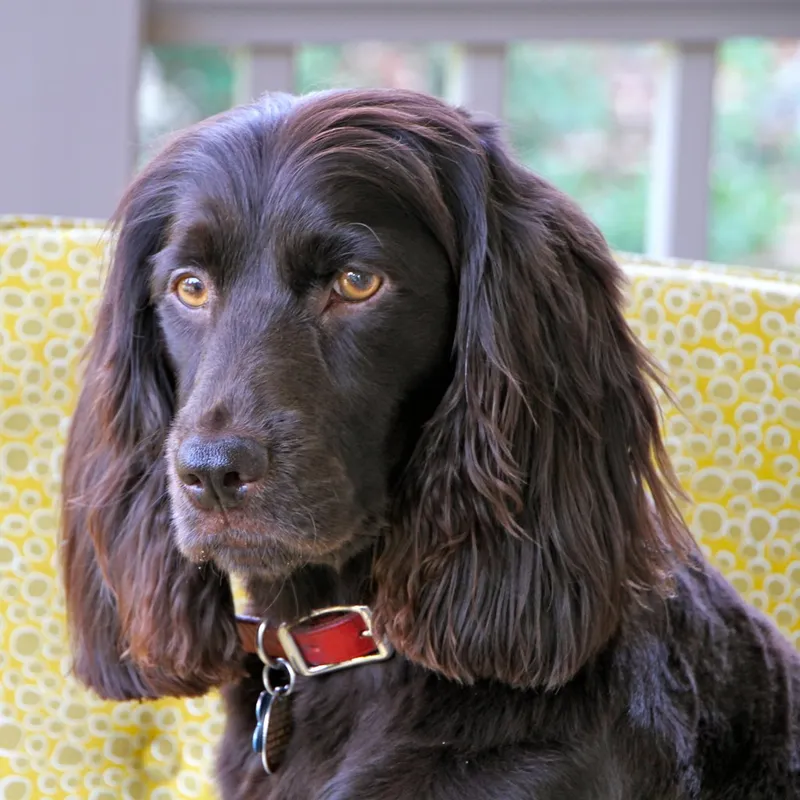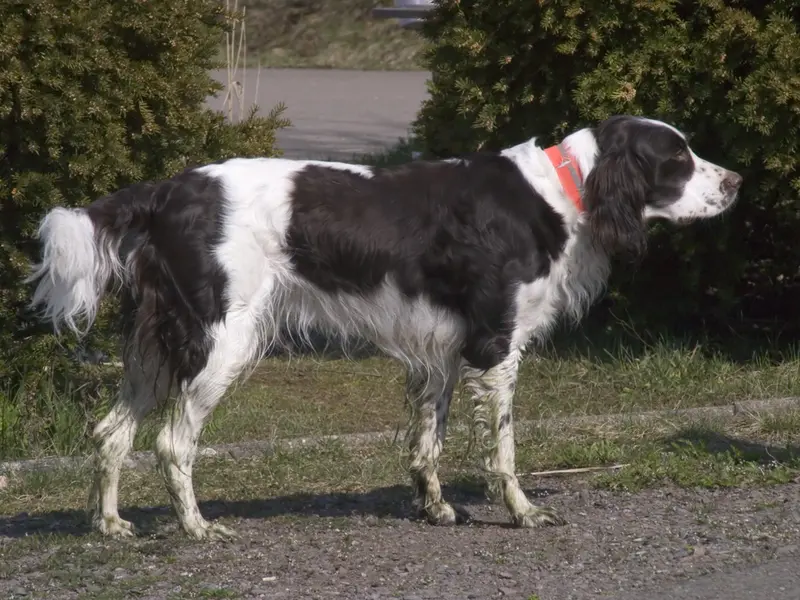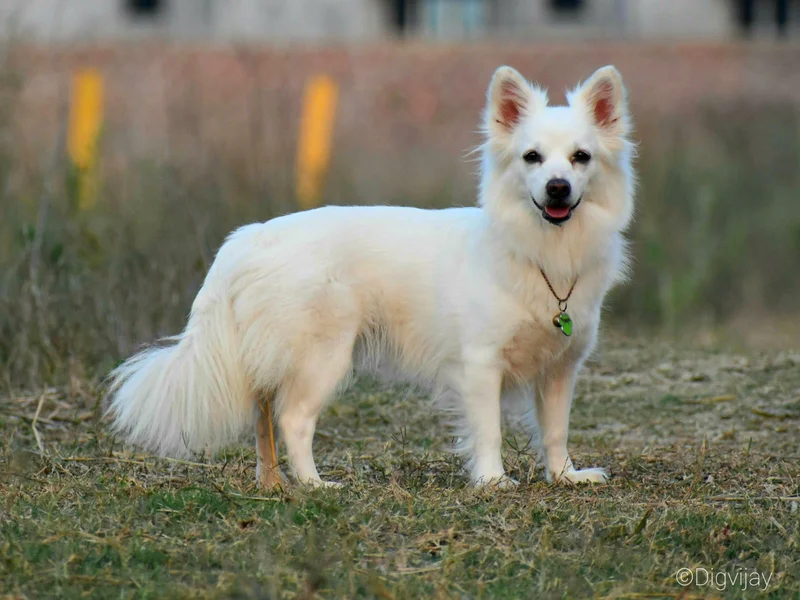English Cocker Spaniel
The English Cocker Spaniel is a medium-small, affectionate, and intelligent breed known for its playful nature and strong hunting instincts. With a rich history as a flushing and retrieving dog, they make excellent family companions and excel in various canine sports.
Overview
🐕Breed Overview
✨Key Traits
💡What Makes English Cocker Spaniel Special
The English Cocker Spaniel is characterized by its affectionate nature and playful spirit. They are known for their strong retrieving instincts, making them excellent hunting companions.
Their intelligence and eagerness to learn make them highly trainable, and they excel in various canine sports. This breed is also known for its sociability; they enjoy being around people and other animals, which enhances their adaptability to family life.
Their cheerful demeanor and energetic personality make them a joy to have around, and they thrive in environments where they can engage in activities with their owners.
The English Cocker Spaniel is a medium-small breed known for its cheerful disposition and strong work ethic. With a height ranging from 15 to 17 inches and a weight of 26 to 35 pounds, this breed is compact yet robust, making it an ideal companion for active families. Originally bred in England for flushing and retrieving game birds, the English Cocker has retained its hunting instincts while also becoming a beloved family pet.
Their affectionate nature and playful demeanor make them excellent companions, especially for families with children. They are known for their intelligence and eagerness to please, which makes training a rewarding experience. Regular exercise is essential for this breed, as they thrive on physical activity and mental challenges.
Daily walks, playtime, and engaging in dog sports like agility or obedience trials are great ways to keep them happy and healthy. Grooming is also an important aspect of their care; their medium-length, silky coat requires brushing two to three times a week to prevent matting and maintain its appearance. Overall, the English Cocker Spaniel is a versatile and loving breed that excels in various roles, from hunting to companionship, making them a cherished addition to any household.
🎉Fun Facts
English Cocker Spaniels are known for their 'melting expression' with soft, dark eyes.
They have a strong instinct to retrieve, making them excellent companions for outdoor activities.
This breed is often referred to as a 'large dog in a small package' due to its compact build and energetic nature.
Breed Characteristics
Family & Friends
Good Behavior
Get Up & Go
Household Harmony
Temperament & Personality
✨Key Traits
🐕Core Temperament
The English Cocker Spaniel is known for its friendly and affectionate temperament. They are sociable dogs that enjoy being part of family activities and thrive on human interaction.
This breed is playful and energetic, making them excellent companions for children and active families. They are also intelligent and eager to please, which makes training a rewarding experience.
However, they can be sensitive and may require gentle handling and positive reinforcement during training. Their sociable nature extends to other pets, making them a good fit for multi-pet households.
💫Personality Profile
The English Cocker Spaniel is known for its cheerful and affectionate personality. They are highly sociable dogs that thrive on human interaction and companionship.
This breed is playful and energetic, making them great companions for families and active individuals. They are intelligent and eager to please, which makes training a rewarding experience.
However, they can be prone to separation anxiety if left alone for long periods, so they do best in homes where they can be part of family activities. Their friendly nature extends to other pets and children, making them a well-rounded family dog.
🔊Vocal Tendencies
English Cocker Spaniels have a moderate barking tendency. They may bark to alert their owners of strangers or when they are excited.
While they are not excessive barkers, they do enjoy vocalizing during play or when seeking attention. Their vocalizations can range from playful barks to soft whines when they want to engage with their family.
Proper training and socialization can help manage their barking tendencies, ensuring they communicate appropriately without becoming nuisance barkers.
Affection & Social Traits
Energy & Activity
Communication Style
Care Requirements
🏃♂️Exercise Requirements
Daily Exercise
The English Cocker Spaniel is a lively and energetic breed that requires regular exercise to maintain its physical and mental well-being. Ideally, they should engage in at least 60 to 90 minutes of exercise daily, which can be broken down into multiple sessions. Activities can include long walks, runs, or playtime in a secure yard.
They also enjoy games like fetch, which cater to their retrieving instincts. For puppies, shorter play sessions are recommended to avoid overexertion, while adult dogs thrive on more vigorous activities. Regular exercise helps prevent behavioral issues such as boredom and anxiety, which can lead to destructive behaviors.
Insufficient exercise can result in weight gain and increased hyperactivity, making it crucial for owners to establish a consistent exercise routine.
Preferred Activities
🏠Living & Adaptability
Space Requirements
English Cocker Spaniels adapt well to various living environments, including apartments, provided they receive adequate exercise. Ideally, they thrive in homes with a yard where they can run and play freely.
In smaller spaces, owners should ensure daily walks and playtime to meet their exercise needs. Their medium size allows them to fit comfortably in most living situations, but they do require space to move around and explore.
Lack of space can lead to restlessness and behavioral issues, so it’s essential to provide mental stimulation and physical activity, regardless of the living situation.
Climate Preference
🍲Feeding Guide
Schedule
Food Types
Portion Size
Special Nutritional Needs
English Cocker Spaniels may benefit from a diet rich in protein and healthy fats to support their active lifestyle. It's important to monitor their weight, as they can be prone to obesity if overfed. Regular veterinary check-ups can help identify any specific dietary needs or sensitivities.
✨Grooming Requirements
Grooming Overview
The English Cocker Spaniel has a medium-length, silky coat that requires regular grooming to keep it healthy and free from mats. Owners should brush their dog's coat two to three times a week, focusing on areas prone to tangles, such as behind the ears and under the legs.
Clipping around the head and ears, as well as scissoring around the feet and tail, should be done every two months. Weekly ear cleaning is essential to prevent infections, given their long, floppy ears.
Regular grooming not only keeps the coat looking its best but also provides an opportunity to check for any skin issues or parasites.
Care Schedule
Brush 2-3 times a week; bathe as needed; trim nails every 2-4 weeks.
Health Profile
⚕️Health Care
Regular health care is vital for the English Cocker Spaniel's lifespan. Routine veterinary check-ups, vaccinations, and preventive treatments can help detect and manage health issues early.
Maintaining a consistent health care routine throughout their life stages, including dental care and parasite prevention, is essential for their overall health and longevity. Early detection of health problems can lead to more effective treatment options and a better quality of life.
Health Issues Overview
⏳Average Lifespan
Genetic Factors
Genetics play a crucial role in the lifespan of the English Cocker Spaniel. Certain hereditary health issues, such as PRA and hip dysplasia, can affect their longevity.
Responsible breeding practices that prioritize genetic diversity and health testing can help reduce the prevalence of these conditions. Potential owners should seek breeders who conduct health screenings and provide health guarantees for their puppies to ensure a healthy start in life.
Living Conditions
The English Cocker Spaniel's lifespan can be influenced by various environmental factors, including housing conditions, climate, and social interactions. Dogs living in active households with regular exercise and mental stimulation tend to live longer, healthier lives.
A balanced diet and routine veterinary care also contribute significantly to their longevity. Additionally, exposure to a variety of environments and socialization opportunities can enhance their overall well-being, leading to a happier and potentially longer life.
🏥Common Health Issues
Progressive Retinal Atrophy (PRA)
Warning Signs
🔬Diagnosis
Veterinarians typically diagnose PRA through eye examinations and genetic testing.
💊Treatment
Currently, there is no cure for PRA, but supportive care can help manage the dog's quality of life.
📝Management Tips
Regular veterinary check-ups and genetic testing for breeding dogs can help manage this condition.
Hip Dysplasia
Warning Signs
🔬Diagnosis
X-rays are used to diagnose hip dysplasia, often performed during routine veterinary visits.
💊Treatment
Treatment options include weight management, physical therapy, and in severe cases, surgery.
📝Management Tips
Maintaining a healthy weight and providing joint supplements can help manage symptoms.
Familial Nephropathy
Warning Signs
🔬Diagnosis
Diagnosis is typically made through blood tests and urinalysis.
💊Treatment
Management may include dietary changes and medications to support kidney function.
📝Management Tips
Regular veterinary check-ups and monitoring kidney function can help manage this condition.
🛡️Preventive Care
🔬Hearing Test
This test assesses the dog's hearing ability, particularly important for particolor English Cockers, who may be prone to deafness.
📅 Annually, especially for puppies and young adults.
🔬Eye Examination
This test evaluates the dog's eyesight and checks for conditions like cataracts or PRA.
📅 Every 1-2 years, or as recommended by a veterinarian.
🔬Hip Evaluation
This test checks for hip dysplasia and evaluates the hip joints for any abnormalities.
📅 At 2 years of age and then every 2-3 years thereafter.
🔬Knee Evaluation
This test assesses the dog's knee joints for luxation or other issues.
📅 Annually, especially for active dogs.
🔬Thyroid Test
This test checks for thyroid function and can help identify hypothyroidism.
📅 Every 1-2 years, or as recommended by a veterinarian.
🔬DNA Test for PRA
This genetic test identifies the presence of the PRA gene, allowing breeders to make informed decisions.
📅 Before breeding.
Training
🧠Intelligence & Trainability
💪Work Drive
This breed has a strong work drive and thrives when given tasks to complete. Activities such as hunting, retrieving, and participating in dog sports provide the mental stimulation they crave.
They excel in agility and obedience trials, showcasing their intelligence and eagerness to work. Owners should engage them in regular training sessions and provide opportunities for them to use their natural instincts, such as scent work or retrieving games, to keep them mentally and physically stimulated.
⚠️Training Considerations
English Cocker Spaniels are intelligent and eager to please, but they can be prone to separation anxiety if left alone for long periods. This breed may also exhibit stubbornness if not properly trained or socialized from an early age.
Common challenges include excessive barking, especially when bored, and a tendency to chase small animals due to their strong prey drive. To overcome these challenges, consistent training, socialization, and mental stimulation are essential.
Engaging them in various activities and providing positive reinforcement during training can help mitigate these issues.
📝Training Tips
Training an English Cocker Spaniel should be a positive and engaging experience. They respond well to gentle, consistent training methods that incorporate praise and rewards.
Start with basic commands and gradually introduce more complex tasks, ensuring to keep training sessions short and varied to maintain their interest. Socialization is crucial; expose them to different environments, people, and other animals to build their confidence and adaptability.
Incorporating fun activities like agility or scent work can also enhance their training experience and strengthen the bond between dog and owner.
History & Heritage
📜Origin Story
The English Cocker Spaniel is a descendant of the original spaniels from Spain, with its history dating back to at least the 18th century. Early references to cocker spaniels can be found in Thomas Bewick's 1790 writings, where he described 'springers' and 'cockers' used for flushing birds.
As hunting practices evolved, the breed was refined for its specific role in flushing and retrieving game. The establishment of the Spaniel Club in 1885 aimed to promote the breeding of different types of spaniels, leading to the formal recognition of the English Cocker Spaniel as a distinct breed.
Over the years, the breed has maintained its popularity in the UK and is known for its versatility as a hunting dog and family companion.
⏳Development History
The English Cocker Spaniel's origins trace back to the 1800s when spaniels were categorized based on size and hunting ability. Initially, both larger and smaller spaniels were bred together, but by 1892, the smaller dogs were recognized as a separate breed, designated as the cocker spaniel.
The breed gained popularity in England, and in 1946, it was officially recognized as a distinct breed separate from the American Cocker Spaniel. This separation was due to differing breeding practices and standards between the two countries, with the English Cocker retaining more of its hunting instincts and physical characteristics.
🛡️Purpose & Historical Role
Originally bred for flushing and retrieving game birds, the English Cocker Spaniel has evolved into a versatile working dog and beloved family pet. Its skills in hunting have made it a favorite among sportsmen, while its affectionate nature and intelligence have endeared it to families. Today, the breed participates in various activities, including agility, obedience, and field trials, showcasing its adaptability and eagerness to work.
🏺Cultural Significance
The English Cocker Spaniel has a rich history as a hunting companion and has been cherished in British culture since the 18th century. Initially bred for flushing game birds, this breed has become a beloved family pet and show dog.
Its friendly demeanor and intelligence have made it a popular choice for various canine sports, including agility and obedience trials. The breed's versatility and charm have also led to its portrayal in popular media, further solidifying its status as a cherished companion in households around the world.
Conservation Status
This breed is well-established with healthy population numbers.









